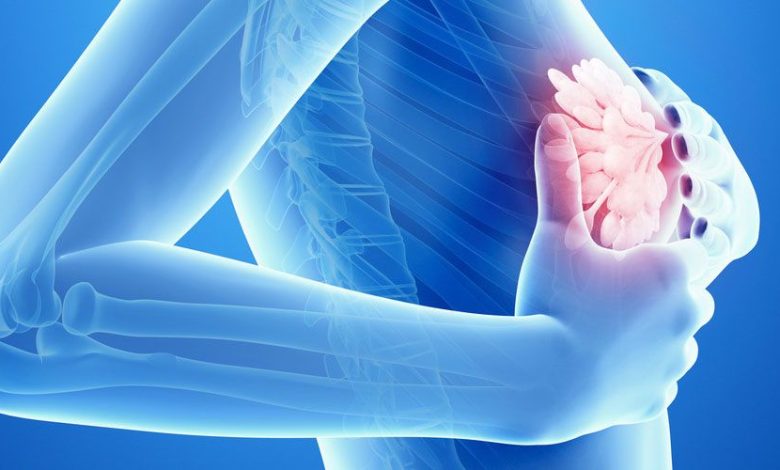chest pain in women, mastalgïya: what is this, causes, symptoms, diagnostics, treatment, prevention

Breast pain; Pain – breast; Mastalgia; Mastodynia; Breast tenderness
Chest pain, also known as mastalgia, is a common discomfort, faced by many women. It can range from a dull ache to a sharp stabbing pain and can be felt in one or both breasts.. Although chest pain is not always a sign of a serious illness, it is important to understand its causes, symptoms and when to seek medical attention.
What is chest pain?
Breast pain is discomfort or pain in one or both breasts.. It can be caused by various factors and can vary in intensity and duration. Some women experience chest pain as a constant pain., while others feel it as a sharp pain, that comes and goes.
Causes of chest pain in women
Chest pain can be caused by several factors., including hormonal changes, menstrual cycles, injury, cyst, fibroadenomas or breast cancer.
Hormonal changes during the menstrual cycle can cause breast tenderness and swelling, as estrogen and progesterone levels rise in the body. This is known as cyclic mastalgia., and usually affects women aged from 20 to 30 years.
Breast injuries can also cause pain, like the cysts, which are fluid-filled sacs, developing in breast tissue.
Fibroadenomas, which are benign tumors, consisting of fibrous and glandular tissue, can also cause chest pain.
In some cases, breast cancer can also cause pain., although this is usually not the only symptom.
Symptoms of chest pain in women
Chest pain may be accompanied by other symptoms, including breast edema, soreness and redness. Some women also experience shooting or burning pain in the chest., while others may feel heaviness or a feeling of fullness in the affected area.
When to contact a healthcare professional
It is important to seek medical attention, if you experience any of the following symptoms along with chest pain:
- Lump in chest
- Changes in the shape or texture of the breast
- Discharge from the nipples
- Inverted nipples
- Breast swelling or redness
- Pain, that lasts longer than a few days or gets worse over time
Diagnosis of chest pain in women
To diagnose the cause of chest pain, the doctor can conduct a physical examination and take a medical history. They may also order additional tests., including mammography., ultrasound or biopsy, to determine the root cause of the pain.
Treatment of chest pain in women
Treatment for chest pain depends on the underlying cause.
Hormonal changes during the menstrual cycle can be treated with painkillers or anti-inflammatory drugs.
In the event of injury or injury, rest and ice may help reduce pain and swelling.
Cysts can be drained or removed, while fibroadenomas can be controlled or removed, if they cause discomfort.
In the case of breast cancer, treatment will depend on the stage and type of cancer..
Home treatment for chest pain in women
There are several things, which you can make at home, to relieve chest pain, including:
- Wearing a bra that supports
- Applying heat or cold to the affected area
- Taking over-the-counter painkillers
- Massaging the affected area
- Practicing Stress Reduction Techniques, such as deep breathing or yoga.
Prevention of chest pain in women
To reduce the risk of developing chest pain, you can take the following steps:
- Wear a supportive bra
- Maintain a healthy weight
- Limit your alcohol intake
- Avoid caffeine
- Learn to deal with stress
In conclusion, chest pain is a common condition, faced by many women. This can be caused by various factors, including hormonal changes, injuries, who is, fibroadenomas or breast cancer. If you are experiencing chest pain, it is important to seek medical attention, to determine the underlying cause. Treatment options range from over-the-counter pain relievers to surgery, depending on the cause. To reduce the risk of developing chest pain, lead a healthy lifestyle and seek medical attention, if you experience any warning signs. It is important to understand, that chest pain is not always a sign of a serious illness, but it's always better to seek medical help, to ensure timely diagnosis and treatment of any underlying diseases.
Used sources and literature
Klimberg VS, Hunt KK. Diseases of the breast. In: Townsend CM Jr, Beauchamp RD, Evers BM, Mattox KL, eds. Sabiston Textbook of Surgery. 21st ed. St Louis, MO: Elsevier; 2022:chap 35.
Sandadi S, Rock DT, Orr JW, Crazy FOUR. Breast diseases: detection, management, and surveillance of breast disease. In: Lobo RA, Gershenson DM, Lentz GM, Crazy FOUR, eds. Comprehensive Gynecology. 7th ed. Philadelphia, PA: Elsevier; 2017:chap 15.
Sasaki J, Geletzke A, Kass RB, Klimberg VS, Copeland EM, Bland KI. Etiologoy and management of benign breast disease. In: Bland KI, Copeland EM, Klimberg VS, Gradishar WJ, eds. The Breast: Comprehensive Management of Benign and Malignant Diseases. 5th ed. Philadelphia, PA: Elsevier; 2018:chap 5.
